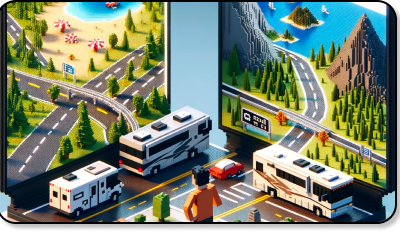Embarking on a boondocking adventure in your RV is an exhilarating experience, offering the freedom to explore off-grid destinations and reconnect with nature. One of the essential considerations for successful boondocking is understanding how long you can comfortably go without emptying your tanks. In this article, we will delve into various factors that determine your boondocking duration, including the number of occupants, tank sizes, average waste-water production per person, and effective ways to reduce waste-water usage.
Know your tank sizes
The first step in estimating your boondocking duration is to familiarize yourself with the sizes of your RV’s tanks. Typically, an RV has three primary tanks: fresh water, gray water (from sinks and showers), and black water (from the toilet). The tank sizes vary across RV models, so consult your owner’s manual or inspect the tanks themselves. Knowing their capacities will help you make accurate calculations.
[dipi_library_layout id=”137″]
Consider the number of occupants
The number of people using your RV’s facilities significantly affects the duration of your boondocking adventure. Each person generates waste-water at a different rate, so it’s crucial to estimate the average waste-water production per person per day.
Calculate waste-water usage
To determine how long you can go without emptying your tanks, multiply the number of occupants by the average waste-water production per person. For instance, if you have two people in your RV, estimating a conservative 15 gallons per person per day, you’ll generate 30 gallons (113 liters) of waste water each day.
Ways to reduce waste-water usage
While it’s essential to plan for waste-water management, adopting practices to reduce waste-water usage will help extend your boondocking duration. Here are some effective strategies:
- Encourage everyone in the RV to be mindful of water consumption. Turn off the faucet while brushing teeth, use low-flow showerheads, and take quick showers.
- When washing dishes, use a basin or plug the sink to reduce water usage. Consider using biodegradable, eco-friendly dishwashing soap to minimize the impact on the environment.
- Opt for “if it’s yellow, let it mellow” when appropriate, reducing the frequency of flushing and conserving water. Use RV-friendly toilet paper to avoid clogging the system.
- Whenever possible, take advantage of public restrooms and shower facilities at campgrounds or nearby recreational areas to reduce the strain on your RV’s tanks.
Monitor tank levels
To avoid unpleasant surprises, keep a close eye on your tank levels. Most modern RVs come equipped with monitoring systems that provide accurate readings. Additionally, you can use visual indicators or tank sensors to gauge your tanks’ capacity. Regularly monitoring your tank levels allows you to plan accordingly and ensures you don’t exceed their maximum capacity.
Boondocking in your RV is a thrilling way to embrace nature and experience freedom on the road. Understanding how long you can go without emptying your tanks is crucial for a successful and hassle-free adventure. By considering the number of occupants, tank sizes, average waste-water production per person, and implementing effective water-conserving practices, you can extend your boondocking duration while minimizing the strain on your RV’s waste management system. Remember to stay mindful of your tanks’ capacity and enjoy the freedom of the open road as you embark on your next unforgettable boondocking journey.




